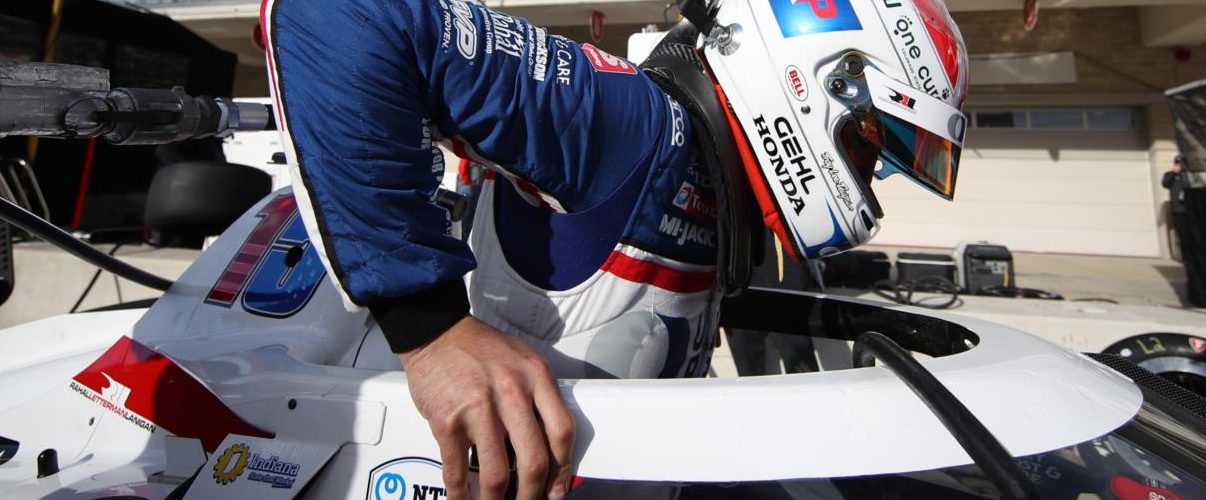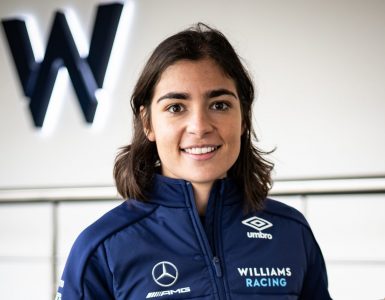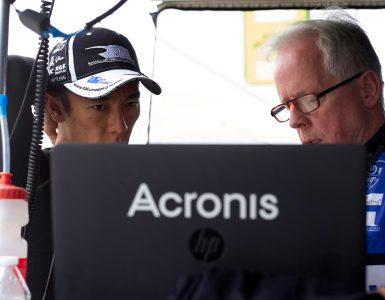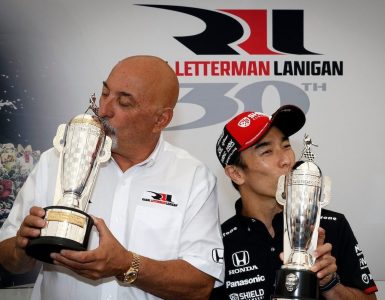Despite the unfortunate postponement of the St Petersburg race, it still looks likely that the hugely competitive NTT IndyCar Series will have 36 cars fighting for the 33 starting places in May’s Indy 500. All the signs are good for some great racing, whether on the streets, ovals, superspeedways or permanent road courses.
One team with a winning pedigree is Rahal Letterman Lanigan Racing – and it’s not just the drivers who are itching to get back racing. The whole team is. The two drivers, Graham Rahal and Takuma Sato both know how to win, but the number of rivals is getting bigger. Challenge accepted.
.@IndyCar 2020. Let’s do this! 👊🏼@GrahamRahal & @TakumaSatoRacer talk about their expectations for the @GPSTPETE, the debut of the Aeroscreen and more 👇🏼👇🏼👇🏼
TUNE IN
⏰ 2:30 on Sunday, March 15
📺 @NBCSN #FirestoneGP | #INDYCAR pic.twitter.com/h8pH8cZ3QJ— Rahal Letterman Lanigan Racing (@RLLracing) March 11, 2020
Tom German, Technical Director for the team has no doubt. “We have attracted more people to the series, and that’s great. For me, the more the better!”
German, a veteran of the IndyCar series has seen Victory Lane with many of his team’s drivers, and over the years, has also watched racing and technology evolve. As he says, keeping up isn’t the answer…. It’s all about getting ahead. The relationship Team Rahal Letterman Lanigan has with Acronis is entering its second year, and it is the variety of circuits the NTT IndyCar Series throws up is the challenge. The first race is a temporary street course at St Petersburg, south of Tampa in Florida, the first of 17 on vastly different terrains. After that come permanent ovals, speedways and road courses.
It may be a stupid question, but it’s worth asking. How relevant is data from last year’s St Petersburg race for this year? It’s a temporary course, surely the kerbs and barriers aren’t exactly the same? And that’s not forgetting the cars.
“Yes, certainly. The street courses change every year,” says German. “Sometimes it’s just a wall that moves a few inches and other years a lot of tracks have been repaved. There are new kerbs, and over the years I’m used to that fact they are always changing.
“More interesting to me is the fact that this is the first race, so even though there have been some track changes, there hasn’t been much testing. That’s the way the regulations are. There a lot of new competitors, and that dynamic of the young guys trying to make their mark against the old guys starting off their season really makes for a challenging event. I think that’s a significant factor as well.
“Then there are the other factors. We have the new aero screen, which changes the weight distribution significantly, and changes the total weight of the car, changes the aerodynamics a bit…. The track has been repaved in sections….
“You ask was last year’s data relevant? Less so than any other year I would say.”
Having worked in IndyCar for many years, with champions and Indy 500 winners first-hand, German has seen feedback from driver to team evolve in extremes. And that growth has been hugely important.
“You need to find every little inch that you can,” he says. “We are always integrating our resources, whether it’s from timing and scoring, the drivers, the telemetry data…. We have a pile of information coming in. The interesting thing is when you think of driver feedback, and engineering data. They are not as separate as they once were. Back when Bobby Rahal drove the car, there were two very distinct things, because there was no information flowing to the driver while he was driving, and there was no information to us when the car was running.
“Now the drivers and engineers are really absorbing much of the same information. They are looking at sector times, they are both looking at steering wheel angle, both looking at rpm, both looking at wheel spin, both comparing times and looking at segments of the track, and all of that is happening in real time. They are closer than ever in terms of absorbing the same information.
“The real challenge tends to be ‘how do you go faster?’,” German adds. “The driver is really helpful in that area. We can see what happens all day long, we have tons of data that shows us what happened, whether it’s video, or logging from the car. But knowing how to translate that information into knowledge that makes us faster on the track is tremendously difficult, and that is where the driver’s abilities help with that.”
No two drivers are the same. Some get out of the car and think about the next day. Others will still be in the bus studying the data recorded each day deep into the night. Tom has worked with two drivers who fit those bills. Both are IndyCar champions, both are winners of the Indy 500. Both are extreme opposites. There is no concrete route to win. Just teamwork and support. It’s about using and understanding the tools you are working with.
2 wins, 2 poles, 5 podiums and 8 top-fives in 2019 only made us want more from 2020.
It all starts Sunday in #StPetersburg with the #FirestoneGP @GPSTPETE.
📆 March 15
📺 @IndyCaronNBC @NBCSN
⏰ 2:30 PM#INDYCAR | #ADifferentBreed pic.twitter.com/WIblODgJk2— Rahal Letterman Lanigan Racing (@RLLracing) March 10, 2020
“It’s really down to the ability of everyone to work together”, agrees German. “Teams that work well together, when people look at the problems slightly differently, and let the ability of individuals to react to each other is where you get your big strike.
“It’s pushing each other, learning from each other. Nobody does this by themselves. No engineers, no drivers, no team owners. It’s a complicated sport, and there are many facets required to do well.”
Month of May Update from @IndyCar and @IMS: pic.twitter.com/K2W4WRTxZT
— Indianapolis Motor Speedway (@IMS) March 16, 2020




